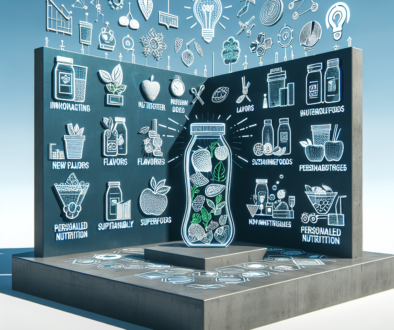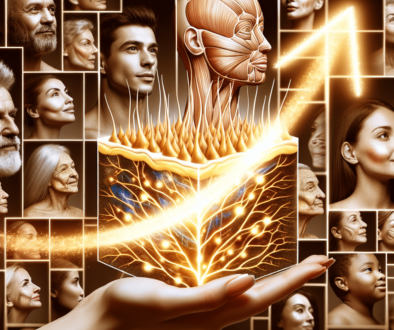Physical And Chemical Properties And In Vitro Degradability Of A New Type Of Basa Fish Skin Collagen Scaffold Material
Keywords
Pangasius Haniltoa Collagen Tissue Scaffolds In Vitro Degradation Biodegradable Polymer Physicochemical Properties Tissue Engineering Pangasisus Haniltoa Collagen Tissue Scaffolds In Vitro Degradation Biodegradable Polymer Physicochemical Properties Tissue Engineering
Abstract
Objective: To prepare a new type of collagen scaffold material using pangasius skin as raw material, and to detect and analyze the structural characteristics, physical properties and in vitro degradability of the material to explore whether pangasius fish can replace terrestrial mammals as a suitable source of collagen scaffold materials. . Methods Basa fish skin was subjected to repeated degreasing, decolorizing, and impurity removal processes, and then freeze-dried into a film. The crude protein content was measured using the Kjeldahl nitrogen determination method, the structure of the material and the size and distribution of pores were observed and analyzed using a scanning electron microscope, the porosity was measured using the liquid displacement method, and the tensile strength was measured using a universal testing machine. Observe how the viscosity of the material changes with temperature to detect the denaturation temperature of the material. Soak the material in phosphate buffer (0.1 mol/L, pH 7.4) placed in a constant temperature shaking box at 37¡ãC, and detect the water absorption rate and weight loss rate of the material. The crude protein content of the resulting material was 95.2%. The thickness is uniform according to the naked eye. Scanning electron microscopy shows that one side of the material is rough and has a porous structure with varying sizes and even distribution; the other side is smooth and has dense pores. Porosity (55.50¡À1.94)%, thickness (0.66¡À0.10) mm, tensile strength (18.82¡À0.94) MPa. The denaturation temperature of the material without cross-linking is 34¡ãC, and after thermal cross-linking it is 36¡ãC. 48 h water absorption rate (379.77¡À77.81)%. The weight loss rate of the thermally cross-linked material after 28 days was (80.22¡À2.49)%, and the buffer pH was 6.67¡À0.05. Conclusion Basa fish skin collagen scaffold material can be made into biofilms with uniform thickness and different structures of dense layer and loose layer. The material has good mechanical strength and a suitable denaturation temperature, but the degradation rate is fast and needs to be improved. Objective To prepare a novel collagen scaffold material using Basa fish (Pangasisus haniltoa) skin as the ingredient and to analyze the structural characteristics, physical properties and degradability of the prepared material, so as to explore whether Basa fish can replace terrestrial mammals for preparing a novel collagen scaffold material. Methods Basa fish skins were lyophilized to obtain the membrane material after repeated degreasing, decolorization and dedoping. Crude protein content was determined by the Kjeldahl method. Structure of the materials and its pore size and distribution were analyzed by scanning electron microscopy ( SEM). Porosity was measured by the liquid displacement technique, and tensile strength was tested using universal testing machine. The changes of viscososity with temperatures were detected to determine the denaturation temperature of the material.The material was immersed in the phosphate-buffered solution ( 0.1 mol/L, pH 7.4), which was placed in a constant temperature shaker at 37¡æ, and the water absorption and weight loss rates of the material were detected. Results The crude protein content of the collagen scaffold material was 95.2%, with visually uniform thickness. SEM photographs showed that one side of the material had a rough surface and porous structure, on which varying sizes of pores distributed uniformly; the other side was smooth with dense pores. The porosity of the material was (55.50¡À1.94) %, thickness was (0.66¡À0.10) mm and tensile strength was (18.82¡À0.94) MPa. The denaturation temperature of the material was 34¡æ before thermo-crosslinking and 36¡æ after thermo-crosslinking. The water absorption of the material was ( 379.77¡À77.81)% at 48 h. At 28 d after thermo-crosslinking, the degradation rate was (80.22¡À2.49)%, and the pH value of buffer was 6.67¡À0.05. Conclusion The collagen scaffold material from Basa fish skin can be made into the biological membrane with uniform thickness, and the membrane comprises double structures: dense layer and loose
For further information of this article and research, feel free to contact our team for asssitance.
Original research was done by Chen Tong¡÷, Xia Kai¡÷, Wu Gang, Zulipiya Abulikemu, Zhu Qingfeng, Wang Shaohai, Yi Yanghua
About ETChem
ETChem, a reputable Chinese Collagen factory manufacturer and supplier, is renowned for producing, stocking, exporting, and delivering the highest quality collagens. They include marine collagen, fish collagen, bovine collagen, chicken collagen, type I collagen, type II collagen and type III collagen etc. Their offerings, characterized by a neutral taste, and instant solubility attributes, cater to a diverse range of industries. They serve nutraceutical, pharmaceutical, cosmeceutical, veterinary, as well as food and beverage finished product distributors, traders, and manufacturers across Europe, USA, Canada, Australia, Thailand, Japan, Korea, Brazil, and Chile, among others.
ETChem specialization includes exporting and delivering tailor-made collagen powder and finished collagen nutritional supplements. Their extensive product range covers sectors like Food and Beverage, Sports Nutrition, Weight Management, Dietary Supplements, Health and Wellness Products, ensuring comprehensive solutions to meet all your protein needs.
As a trusted company by leading global food and beverage brands and Fortune 500 companies, ETChem reinforces China’s reputation in the global arena. For more information or to sample their products, please contact them and email karen(at)et-chem.com today.



